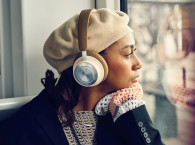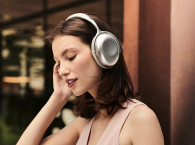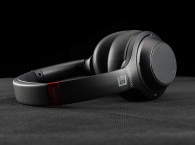
As Microsoft describes in their confusing newsroom/blog website (these companies - Microsoft is not alone on the trend - need to decide when they do one or the other...) "Surface Headphones offer a smarter way to listen, with spectacular rich audio and hands-free calling." We cannot attest yet as to the audio quality, but we trust Microsoft when they add that the Surface Headphones "make it easy to block out the world to get more done with adjustable noise cancellation, so you can focus on your task or just relax with your favorite music."
The over-ear closed-back design combines on-ear rotating rings for the user to adjust the right amount of noise-cancelling - from 13 levels of ambient noise control - something which is clearly a market-first, and features a tactile surface for users to access the "smart" features and services. The company details up to 40 dB for passive noise cancellation, and up to 30 additional dB with active noise cancellation.
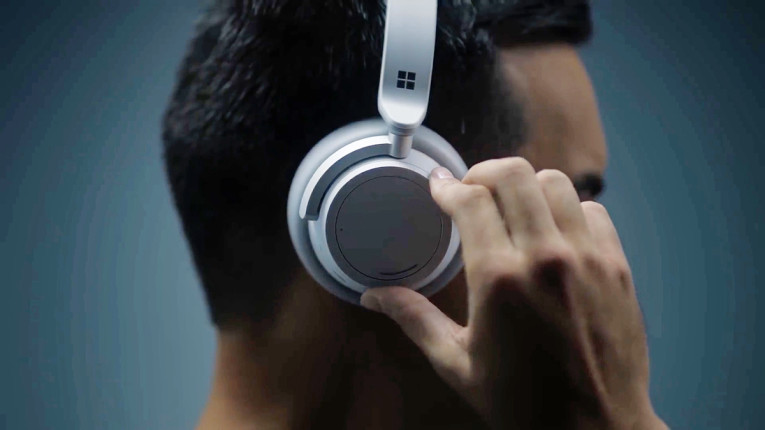
Apart from the noise-cancellation, the Surface Headphones were designed to integrate with Microsoft's own Voice Personal Assistant, Cortana. Exclusively in the U.S., Cortana is available to provide proactive guidance, read emails, or alert users for calendar items, and actions can be activated by voice or directly on the earcups tactile surface. There are mute, power, volume dial (right ear), Noise Cancellation dial (left ear), and touch functions on both earcups. As the Redmond company explains, the headphones will automatically pause and play whatever is playing (music or a video being watched on the connected device) when the user removes the headphones from the ears.
Of course Microsoft didn't forget communications, and the Surface Headphones were designed with Skype and collaboration in mind, using 2 beam-forming microphones on each ear cup, and 8 microphones in total to also support the noise-control features, helping users to focus on the sounds they want to listen or capture, and allowing for excellent call experiences. Both the noise cancellation and volume levels can be adjusted with the new on-ear dials.
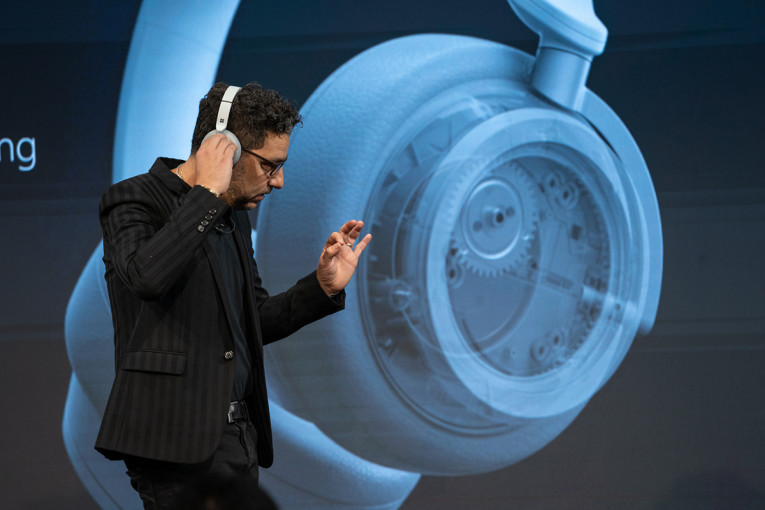
Everywhere or Nowhere
The Surface Headphones were announced at a Microsoft event where the company also unveiled a series of new products, including the Surface Pro 6, Surface Laptop 2, and Surface Studio 2 touch-screen computers, and announced availability of the Windows 10 October 2018 Update and new Office 365 experiences. As Microsoft explains, all the new products and software updates try to provide a better balance between work and personal activities, given that users bring their own devices to work anyway, and carry them everywhere, so they can do both at any time.
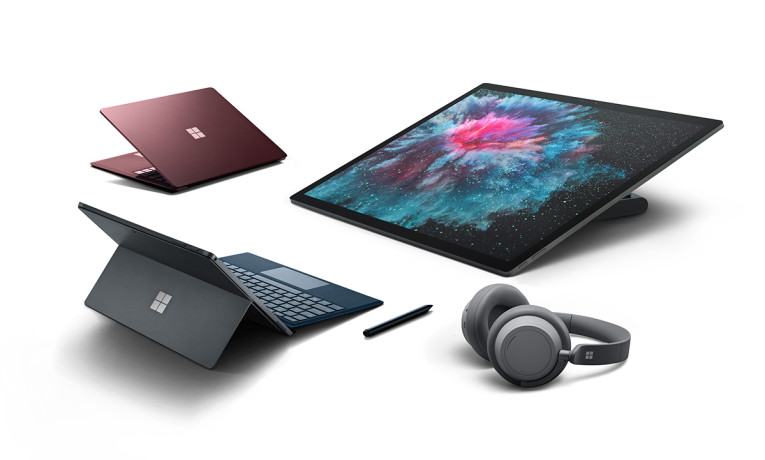
There's also a new way to purchase Surface devices with Surface All Access. "In today’s multi-device world, you should be able to pick the phone you want, the laptop you want and have best of breed. With features like the Your Phone App and Windows Timeline, we will help you move seamlessly across all your devices and bridge the gap between your iOS and Android devices and your PC. No matter where you are, what device you are using, or where your content lives, you should always be ready to be productive," they state.
Unfortunately, on the computer hardware level, Microsoft continues to disappoint, failing to introduce Thunderbolt 3 interfaces for the third consecutive year - a technology they initially supported and promoted with Intel since its inception. The latest Surface Studio 2 workstation features a single USB-C connector and four "old" USB 3.0 connectors, which shows not much as changed on that front and that Windows continues to lag painfully behind.
How the new Surface Headphones will fit in this strategy will be interesting to follow. Depending on how aggressively Microsoft will promote the headphones in the retail chain, the company's first premium headphones might be a strong entry into a very competitive segment, or not.
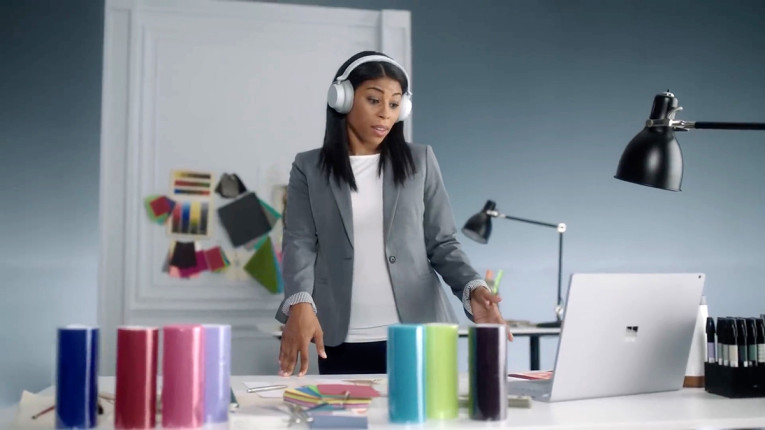
The design certainly looks clean and comfortable, and Microsoft details they have used custom 40mm free-edge drivers to provide the sound quality one would expect from a premium headset, while keeping the weight low, at 10.2 oz (290 g). The choice of premium materials highlights comfort and durability for long term use, with memory foam and an overall balanced design making a full day of travel or working at the office possible.
Being Bluetooth headphones, the Surface Headphones feature a battery for up to 15 hours of music listening over Bluetooth and with Active Noise Cancellation(ANC) on and Cortana VPA on. This can be expanded up to 50 hours in idle mode, with Bluetooth off and ANC on, for focusing on the work at the office or reading a book on the plane. And while Microsoft clearly doesn't think that USB-C is important on computers, it does indeed use a USB-C connector for fast charging the Surface Headphones - obviously! - allowing users to get almost an hour of music in just five minutes of charging. Full charge will also take less than 2 hours. When needed, the headphones have a 3.5mm audio connector for wired mode.
To make connections with any Windows 10 PC right out of the box, the Surface Headphones now feature a new Swift Pair function. And while Surface Headphones are optimized for Surface devices, they will pair with any Bluetooth device.
Scheduled to be available later in 2018, the price target tells us that Microsoft engineered the headphones to the maximum. The Surface Headphones will retail for $349, including the Surface Headphones Carrying Case, a USB-C 1.5m cable, and audio cable for wired mode.
www.microsoft.com





